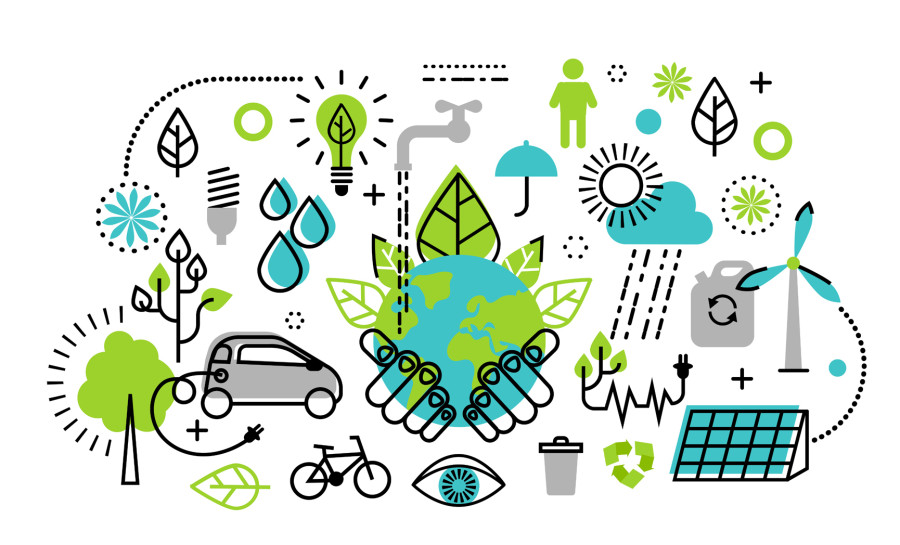Columns
The future of energy in Nepal can be sunny, if it chooses wisely
To become prosperous and energy secure, the country must invest in solar as much as it does in hydropower.
Kabindra Purush Dhakal
The past decade was an interesting one for Nepal. Having just come out of a damaging civil war and a suffocating monarchy in the 2000s, the country was finally able to lock in a secular federal republic model with a new constitution this last decade. It can be said that the 2010s have been defined by Nepal’s quest for change and progress. Yet, the decade can also be defined as a failure in so many respects.
Nepal failed to unite the entire demographic under the new constitution, which is intrinsically discriminatory towards more than half of the population—women having unequal citizenship rights. Even as federalism has been codified, its implementation is still lacking.
Many of the rights promised by this ‘most progressive’ constitution have failed to materialise—free and compulsory basic education for all is a significant one that will haunt the country for decades to come. Nepal also was unable to bounce back effectively from natural disasters, the 2015 earthquake being the major one. And, significantly, populism and nationalistic politics dominated.
But, amid all of these, the one that sticks out is that Nepal’s dreams of reaching middle-income status and attaining prosperity have been left unfulfilled. And the primary reason for this has been its inability to become energy secure.
The case for energy security
India’s blockade in 2015 was the perfect instance to show all Nepalis the importance of energy security. Being dependant on India for most of its energy needs—everything from cooking gas to aviation fuel—Nepal was seriously hamstrung by India’s unfriendly manoeuvrings. The economy took a significant hit, with an impact of over $1 billion; businesses in the service and hospitality sectors had to shut down. Moreover, nationalistic sentiments were given a reason to flourish, changing the course of Nepal’s politics. Energy dependency affects the socio-economic fabric during times of geopolitical hostility. But such reliance on foreign resources also affects the economy at the best of times.
A country’s balance of payments is a sum of all transactions between that country (and all its entities) and the rest of the world. Because Nepal’s manufacturing and agriculture sectors have not been able to produce enough to gain income from abroad, and because its services sector is still in its infancy, Nepal has for years been relying upon remittances sent by out-migrants to counterweigh its balance of payments. However, due to the growing trade imbalance (Nepal is heavily import-dependent), Nepal’s balance of payments deficit has only been increasing. Energy imports have been a major aspect of this.
In the fiscal year 2018-19, Nepal’s fossil fuel import bill went just over Rs214 billion—a 25 percent increase over the year prior. The fossil fuel imports have been rising at a time when electricity supply has also increased—thereby showing Nepal’s thirst for energy. At the same time, Nepal has also spent additional amounts to import electricity from India—over Rs20 billion in 2018. This is a critical issue. While the country needs its manufacturing and services sector to chip in to rebalance net transaction deficits, it cannot do so while relying on foreign energy.
For one, dependence can mean entire sectors being held hostage, as happened in 2015. For another, it will be near impossible for Nepal’s manufacturing to develop a comparative advantage while relying on expensive foreign energy imports. After all, at least in the short to medium term, Nepal does not have the technology and skill capacity to compete with high-end products without worrying about price.
For Nepal, a country most likely to be damaged severely by climate change, it is all the more imperative to kick the reliance on fossil fuels, while continuing on the quest to become energy secure. Besides the massive amounts of fossil fuel, electricity from India also remains tied to coal, and looks to be linked to the major pollutant through 2030. If, and more likely when, Article 6 of the Paris Agreement becomes implemented, Nepal can benefit greatly if it reduces its carbon habit. As the world changes to adopt climate-friendly sources in mainstream energy production, the country has the unique ability to entirely rely on renewable energy sources, as it is already pivoting towards a hydropower-centric future.
Can hydropower do it alone?
Nepalis in the past decade, more than any time before, have been fed factoids about Nepal’s abundant water resources and its hydropower potential. This has been done in an almost evangelical manner and been propagandised to such a level that it feels impossible for the future not to rely on this energy source solely. The country is estimated to have a technically- and economically-viable hydropower capacity of 40,000 MW—something that almost every Nepali seems to know at this point. The benefits of hydropower are there, and probably do not need explaining, but it alone cannot solve Nepal’s energy woes. Hydropower’s weaknesses and challenges necessitate the need for alternative and complementary sources of energy.
Hydroelectric energy has been put on a pedestal for far too long without it providing a matching outcome. Nepal’s first plant, in Pharping, was established in 1911—over a hundred years ago. When it was shut down in the 1990s, its installed capacity of 500 kW was considered to be insignificant. Yet, in 2018, the installed capacity of hydropower was less than 1,100 MW—not even meeting the demand of the country (about 1,700 MW in 2017). Even with new projects powering up in 2019 and 2020, the installed capacity will only rise to around 2,000 MW. At the same time, Nepal is said to be in a situation of suppressed demand, wherein an unlocking of economical and consistent energy resources would have the country consume more energy than it currently is.
Hydropower projects also take years to complete. Moreover, much-hyped projects—ones that open spectacularly on the secondary market—are often delayed. Upper Tamakoshi is one such high profile project that has repeatedly missed essential deadlines. They are also expensive to build, which result in the electricity per unit being more costly than other renewables—especially with large, reservoir-type projects.
At the same time, reservoir-based plants have other, more severe, challenges, particularly relating to the displacement of people and loss of ecosystems. The damages that the Kulekhani Dam sustained during the 2015 earthquake show the limits of reservoirs, especially in a seismically-active region like Nepal. This makes the low-capacity run-of-the-river type hydro projects the ones most likely to be implemented—which is true of Nepal currently.
But herein lies another problem. While run-of-the-river projects may be more environment-positive, easier to build (as in, fewer hurdles) and produce cheaper electricity, they generally tend to have lower capacities. Moreover, without large reservoirs as storage, they are seasonal. While the installed capacity in Nepal in 2018 was almost 1,100 MW, as mentioned above, the entire country was only producing 688 MW at the peak hour in December that year. This necessitates the need for other renewable sources to support hydroelectricity.
Eggs in at least two baskets
One of the first things a student learns in an economics class is that resources are scarce—that is, they run out eventually. Even with Nepal’s bountiful water supply and potential, the impacts of climate change mean that this may change for the worse in the future. But one energy source is guaranteed to last at least as long as human civilisation. And that is solar.
Solar-based electricity has already proved to be cheaper to produce than other mediums. In fact, even as it relies heavily on coal, India has demonstrated how to produce cheap solar energy. Not only does this technology produce no emissions during electricity generation, but it can also be adopted in a decentralised manner, using rooftops and roads, which reduces the need for long transmission lines and prevents further degradation of pristine land. This one aspect immediately makes it a more viable option over reservoir-based hydropower. Its relatively simple maintenance needs make it easy to install into people’s rooftops—a fact that Nepalis are well-accustomed to.
During the past two decades, one of Nepal’s other serious failures was load shedding. The electricity authority could not even manage to fulfil Nepal’s basic demand needs—necessitating urban areas to face hours-long, scheduled power cuts. It was only in 2018 when load shedding was reduced to a minimum. In the face of this, Nepalis showed amazing resilience and adaptability. Entrepreneurs selling an innovative mix of inverters, solar panels and battery-storage systems sprang out of nowhere to help Nepalis lessen the bite of the power cuts.
When Nepal Electricity Authority under the leadership of Kulman Ghising solved the issue in the short term, by re-drawing supply plans and purchasing more energy from India, it made people forget how easily implementable solar energy is at the most basic level. Since then, solar technology has continued to improve to lower costs of production, installation and electricity generation. Storage technology, too, has advanced to sustain the needs of large populations. In fact, the world’s largest Lithium battery—installed by Tesla in Australia—not only smoothed electricity supply and stored excess energy, but it did this so efficiently that it actually started to pay off its cost in record time. Moreover, solar technology installation can be completed on a schedule that makes scaling up easier than it is with hydropower.
This is not meant to be a critique of hydropower, which is important for Nepal’s future development and energy security. But hydropower has many backers and promoters, whereas the need for a diverse mix cannot be overstated. For Nepal to achieve its potential, and leave the failures of this past decade behind, it needs to invest in energy security—and it needs to do so in haste. At the same time, with one eye on the future and with environmental and economic costs at the forefront, Nepal must invest in solar energy. And it must promote solar as much as, if not more than, it promotes hydropower.




 7.15°C Kathmandu
7.15°C Kathmandu













%20(1).jpg&w=300&height=200)

